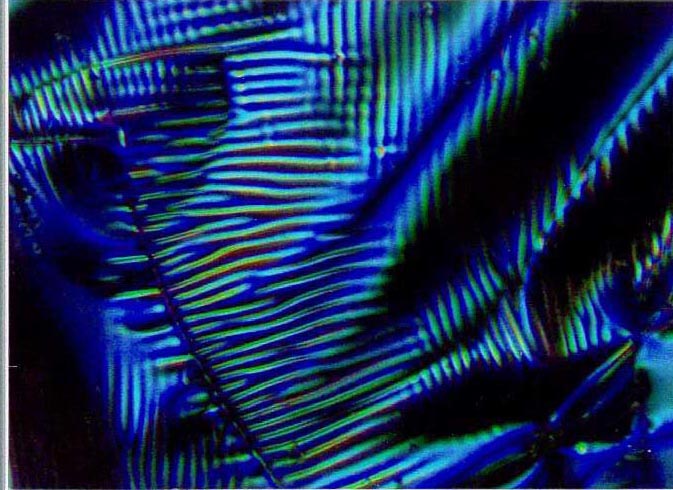 |
 |
A thin film of soft material can be stabilized by capping with layers of a more rigid material. Freely-standing or unsupported films are not supported on a solid substrate, but are suspended in air. In freely-standing trilayer films of this kind, lateral morphology is formed spontaneously due to a balance of energy. Long range van der Waal’s forces favour the capping layers coming together, but must overcome the energy required to bend the rigid films. This energy balance leads to lateral domains of a characteristic width. In this image, a film of polyisoprene (50 nm thick) is capped with polystyrene (50 nm thick) and heated, causing buckling and lateral morphology. This film is observed using Nomarski Differential Interference Contrast (DIC) microscopy at 25X magnification, which gives “topographical” information about the sample through constructive and destructive interference. Buckling or wrinkling occurs due to difference in thernal expansion rates between the polymer and the steel sample holder. As well, the parallel lateral domains are visible with a well-defined periodicity, which can be measured by performing a Fourier transform on the image.